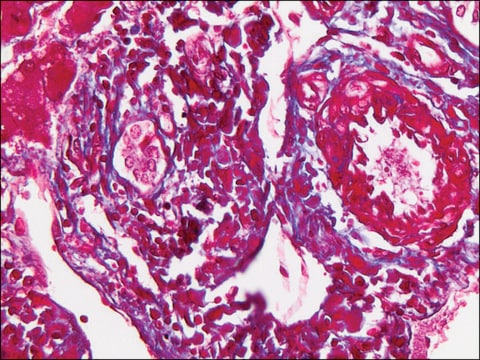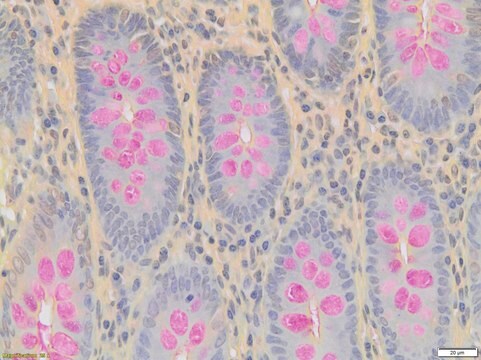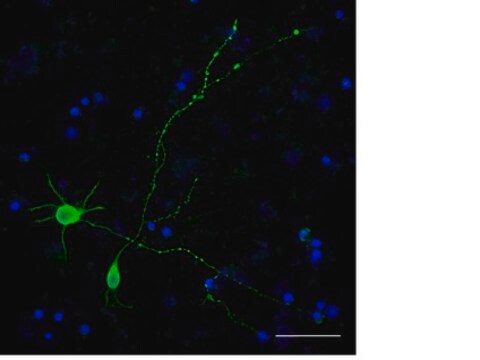MABN2709
Anti-LRAT Antibody, clone 49569

Synonym(e):
lecithin retinol acyl transferase, retinyl ester synthase
About This Item
Empfohlene Produkte
Biologische Quelle
mouse
Qualitätsniveau
Antikörperform
purified antibody
Antikörper-Produkttyp
primary antibodies
Klon
49569, monoclonal
Mol-Gew.
calculated mol wt 25.820 kDa
observed mol wt ~24 kDa
Aufgereinigt durch
using protein G
Speziesreaktivität
mouse
Verpackung
antibody small pack of 100
Methode(n)
immunofluorescence: suitable
immunohistochemistry: suitable
western blot: suitable
Isotyp
IgG2aκ
Epitopsequenz
Cytoplasmic domain
Protein-ID-Hinterlegungsnummer
UniProt-Hinterlegungsnummer
Lagertemp.
2-8°C
Angaben zum Gen
mouse ... Lrat(79235)
Spezifität
Immunogen
Anwendung
Evaluated by Western Blotting in mouse retina lysate.
Western Blotting Analysis: A 1:1,000 dilution of this antibody detected LRAT in mouse retina tissue lysate.
Tested Applications
Western Blotting Analysis: A 1:1,000 dilution from a representative lot detected LRAT in Retinal pigment epithelium (RPE) microsome lysate.
Immunofluorescence Analysis: A representative lot detected LRAT in Immunofluorescence applications (Batten, M.L., et al. (2004). J. Biol. Chem. 279(11):10422-32; Moise, A.R., et al. (2007). J Biol Chem. 282(3):2081-90).
Immunohistochemistry Analysis: A representative lot detected LRAT in Immunohistochemistry applications (Batten, M.L., et al. (2004). J. Biol. Chem. 279(11):10422-32; Moise, A.R., et al. (2007). J Biol Chem. 282(3):2081-90).
Western Blotting Analysis: A representative lot detected LRAT in Western Blotting applications (Batten, M.L., et al. (2004). J Biol Chem. 279(11):10422-32; Moise, A.R., et al. (2007). J. Biol. Chem. 282(3):2081-90).
Note: Actual optimal working dilutions must be determined by end user as specimens, and experimental conditions may vary with the end user.
Zielbeschreibung
Physikalische Form
Rekonstituierung
Lagerung und Haltbarkeit
Sonstige Hinweise
Haftungsausschluss
Sie haben nicht das passende Produkt gefunden?
Probieren Sie unser Produkt-Auswahlhilfe. aus.
Analysenzertifikate (COA)
Suchen Sie nach Analysenzertifikate (COA), indem Sie die Lot-/Chargennummer des Produkts eingeben. Lot- und Chargennummern sind auf dem Produktetikett hinter den Wörtern ‘Lot’ oder ‘Batch’ (Lot oder Charge) zu finden.
Besitzen Sie dieses Produkt bereits?
In der Dokumentenbibliothek finden Sie die Dokumentation zu den Produkten, die Sie kürzlich erworben haben.
Unser Team von Wissenschaftlern verfügt über Erfahrung in allen Forschungsbereichen einschließlich Life Science, Materialwissenschaften, chemischer Synthese, Chromatographie, Analytik und vielen mehr..
Setzen Sie sich mit dem technischen Dienst in Verbindung.




